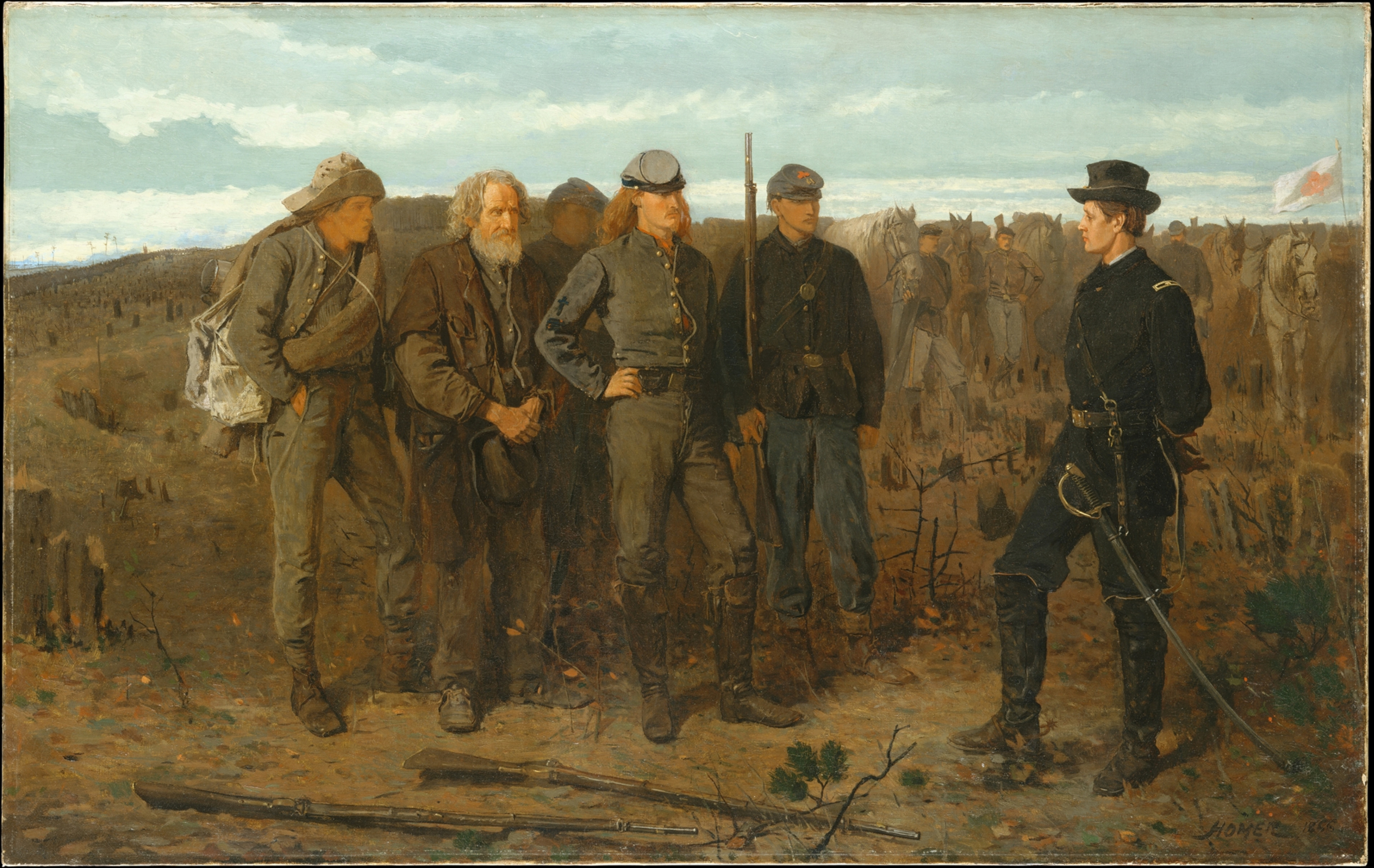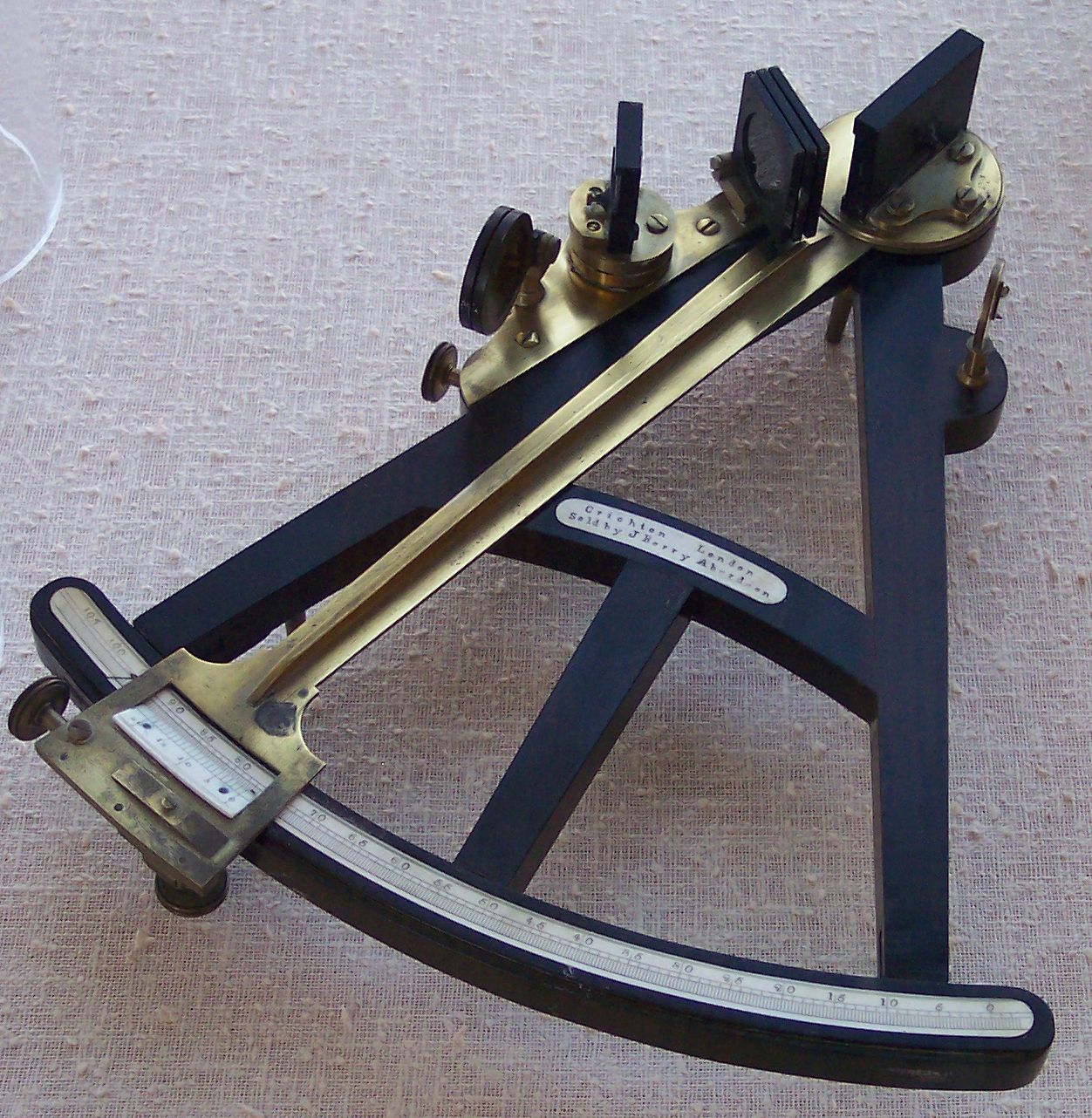|
Eight Bells (painting)
''Eight Bells'' is an 1886 oil painting by the American artist Winslow Homer. It depicts two sailors determining their ship's latitude. It is one of the Homer's best-known paintingsCikovsky, 236 and the last of his major paintings of the 1880s that dramatically chronicle man's relationship to the ocean. History and description ''Eight Bells'' was the outgrowth of a series of oil paintings that Homer made using three wooden panels he found in the cabin of his brother's sloop at Prouts Neck, Maine. On two of the panels Homer painted scenes of mackerel fleets at Prouts Neck, one at dawn and the other at sunset; on the third he painted a grisaille study of the work that inspired ''Eight Bells'', which depicted a ship's officer standing alone, taking an observation with an octant. Several years earlier, Homer had painted a watercolor on his voyage to England that also showed a sailor performing this activity. The painting's title is a reference to usage of the ship's bell on the ... [...More Info...] [...Related Items...] OR: [Wikipedia] [Google] [Baidu] [Amazon] |
Winslow Homer
Winslow Homer (February 24, 1836 – September 29, 1910) was an American landscape painter and illustrator, best known for his marine subjects. He is considered one of the foremost painters of 19th-century America and a preeminent figure in American art in general. Largely self-taught, Homer began his career working as a commercial illustrator. He subsequently took up oil painting and produced major studio works characterized by the weight and density he exploited from the medium. He also worked extensively in watercolor, creating a fluid and prolific oeuvre, primarily chronicling his working vacations. Early life Homer was born in Boston, Massachusetts, on February 24, 1836, the second of three sons of Charles Savage Homer and Henrietta Maria Benson Homer, both from long lines of New Englanders. His mother was a gifted amateur watercolorist and Homer's first teacher. She and her son had a close relationship throughout their lives. Homer took on many of her traits, includi ... [...More Info...] [...Related Items...] OR: [Wikipedia] [Google] [Baidu] [Amazon] |
Prouts Neck, Maine
Prouts Neck is a coastal peninsula, located within the town of Scarborough, in southern Maine. History Prouts Neck first appears on a map by Samuel de Champlain from his 1604 explorations of New England. In early times, it was known as Black Point because of the dark appearance of its forests. Captain Thomas Cammock, a nephew of the Earl of Warwick, was the first European settler of present day Prouts Neck. In 1631, he was granted an area of about 1500 acres by the Plymouth Council for New England which had jurisdiction, granted by the King, over all of New England. Ownership passed through several early families and settled for a time with Timothy Prout, a Boston merchant, who lived there from 1728 to 1768. His descendants consisting mostly of sea captains stayed in the nearby area. Even today they continue to live across coastal Maine and make a living as fishermen. The name Prout’s Neck became well established, but by 1830 the Libby family had purchased most of the Neck ... [...More Info...] [...Related Items...] OR: [Wikipedia] [Google] [Baidu] [Amazon] |
Grisaille
Grisaille ( or ; , from ''gris'' 'grey') means in general any European painting that is painted in grey. History Giotto used grisaille in the lower registers of his frescoes in the Scrovegni Chapel in Padua () and Robert Campin, Jan van Eyck and their successors painted grisaille figures on the outsides of the wings of triptychs, including the ''Ghent Altarpiece''. Originally these were the sides on display for most of the time, as the doors were normally kept closed except on feast days or at the (paid) request of tourists. However, today these images are typically unseen in museums, the triptych displayed in its open state, flat against a wall. In these cases, imitation of sculpture was intended, as sculpture remained more expensive than a painting, even one by an acknowledged master. Limners often produced illuminated manuscripts in pen and watercolour, wash with a very limited colour range, and many artists such as Jean Pucelle (active 1320–1350) and Matthew Paris sp ... [...More Info...] [...Related Items...] OR: [Wikipedia] [Google] [Baidu] [Amazon] |
Octant (instrument)
The octant, also called a reflecting quadrant (instrument), quadrant, is a reflecting instrument used in navigation. Etymology The name ''octant'' derives from the Latin ''octans'' meaning ''eighth part of a circle'', because the instrument's arc is Circular sector, one eighth of a circle. ''Reflecting quadrant'' derives from the instrument using mirrors to reflect the path of light to the observer and, in doing so, doubles the angle measured. This allows the instrument to use a one-eighth of a Turn (geometry), turn to measure a quarter-Turn (geometry), turn or Circular sector, quadrant. Origin of the octant Newton's reflecting quadrant Isaac Newton's reflecting quadrant was invented around 1699. A detailed description of the instrument was given to Edmond Halley, but the description was not published until after Halley's death in 1742. It is not known why Halley did not publish the information during his life, as this prevented Newton from getting the credit for the inven ... [...More Info...] [...Related Items...] OR: [Wikipedia] [Google] [Baidu] [Amazon] |
Watercolor Painting
Watercolor (American English) or watercolour (Commonwealth English; see spelling differences), also ''aquarelle'' (; from Italian diminutive of Latin 'water'), is a painting method"Watercolor may be as old as art itself, going back to the Stone Age when early ancestors combined earth and charcoal with water to create the first wet-on-dry picture on a cave wall." in which the paints are made of pigments suspended in a water-based solution. ''Watercolor'' refers to both the medium and the resulting artwork. Aquarelles painted with water-soluble colored ink instead of modern water colors are called (Latin for "aquarelle made with ink") by experts. However, this term has now tended to pass out of use. The conventional and most common support—material to which the paint is applied—for watercolor paintings is watercolor paper. Other supports or substrates include stone, ivory, silk, reed, papyrus, bark papers, plastics, vellum, leather, fabric, wood, and watercolor canvas ... [...More Info...] [...Related Items...] OR: [Wikipedia] [Google] [Baidu] [Amazon] |
Ship's Bell
A ship's bell is a bell on a ship that is used for the indication of time as well as other traditional functions. The bell itself is usually made of brass or bronze, and normally has the ship's name engraved or cast on it. Strikes Timing of ship's watches Unlike civil clock bells, the strikes of a ship's bell do not accord to the number of the hour. Instead, there are eight bells, one for each half-hour of a four-hour watch. In the age of sailing, watches were timed with a 30-minute hourglass. Bells would be struck every time the glass was turned, and in a pattern of pairs for easier counting, with any odd bells at the end of the sequence. Classical system The classical, or traditional, system was: Most of the crew of a ship would be divided into two to four groups, called watches. Each watch would take its turn with the essential activities of manning the helm, navigating, trimming sails, and keeping a lookout. The hours between 16:00 and 20:00 are so arranged because that ... [...More Info...] [...Related Items...] OR: [Wikipedia] [Google] [Baidu] [Amazon] |
Watch System
Watchkeeping or watchstanding is the assignment of sailors to specific roles on a ship to operate it continuously. These assignments, also known at sea as ''watches'', are constantly active as they are considered essential to the safe operation of the vessel and also allow the ship to respond to emergencies and other situations quickly. These watches are divided into work periods to ensure that the roles are always occupied at all times, while those members of the crew who are assigned to work during a watch are known as ''watchkeepers''. On a typical seafaring vessel, be it naval or merchant, personnel "keep a watch" in various locations and duties across the ship, such as the bridge and engine room. Typical bridge watchkeepers include a lookout and a deck officer who is responsible for the safe navigation of the ship; whereas in the engine room, an engine officer ensures that running machinery continues to operate within tolerances. Types of watches A wide variety of types of ... [...More Info...] [...Related Items...] OR: [Wikipedia] [Google] [Baidu] [Amazon] |
Celestial Navigation
Celestial navigation, also known as astronavigation, is the practice of position fixing using stars and other celestial bodies that enables a navigator to accurately determine their actual current physical position in space or on the surface of the Earth without relying solely on estimated positional calculations, commonly known as dead reckoning. Celestial navigation is performed without using satellite navigation or other similar modern electronic or digital positioning means. Celestial navigation uses "sights," or timed angular measurements, taken typically between a celestial body (e.g., the Sun, the Moon, a planet, or a star) and the visible horizon. Celestial navigation can also take advantage of measurements between celestial bodies without reference to the Earth's horizon, such as when the Moon and other selected bodies are used in the practice called "lunars" or the Lunar distance (navigation), lunar distance method, used for determining precise time when time is u ... [...More Info...] [...Related Items...] OR: [Wikipedia] [Google] [Baidu] [Amazon] |
Brooklyn Museum - Eight Bells - Winslow Homer - Overall
Brooklyn is a Boroughs of New York City, borough of New York City located at the westernmost end of Long Island in the New York (state), State of New York. Formerly an independent city, the borough is coextensive with Kings County, one of twelve original counties established under English rule in 1683 in what was then the Province of New York. As of the 2020 United States census, the population stood at 2,736,074, making it the most populous of the five boroughs of New York City, and the most populous Administrative divisions of New York (state)#County, county in the state.Table 2: Population, Land Area, and Population Density by County, New York State - 2020 New York State Department of Health. Accessed January 2, 2024. [...More Info...] [...Related Items...] OR: [Wikipedia] [Google] [Baidu] [Amazon] |






